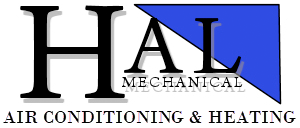Many homes use boiler systems to keep their home warm and comfortable during the cold winter season. Like all machinery, boilers require care and maintenance and will develop a number of problems including high pressure. When boiler pressure runs too high, it can spell trouble both for the system’s longevity and for the safety of its surroundings. Hal Mechanical will share some common reasons behind high boiler pressure and ways to correct this problem.
Understanding Boiler Pressure
Boiler pressure refers to the hot water pressure within a sealed central heating system. It is important for the circulation of hot water throughout the radiators and back to the boiler. The proper pressure for most boilers should be between 1 and 1.5 bars when cool. However, when the system is running and water heats up, this pressure can naturally rise slightly.
What Causes High Boiler Pressure
There may be several reason or factors that can lead to a boiler’s pressure being too high:
• Overfilled System: One of the most common reasons for high boiler pressure is having too much water in the system. This can happen when homeowners try to replenish the system themselves without knowing the right amount of water to add.
• Faulty Pressure Relief Valve: This valve is designed to release water when the pressure gets too high, acting as the boiler’s safety system. If it is malfunctioning, the system won’t be able to release the excess pressure.
• Defective Expansion Vessel: An expansion vessel contains a pocket of air that absorbs the expansion of water as it heats up. If this vessel is compromised or fails, the water’s expansion can lead to increased pressure.
• Heat Setting Too High: If the boiler’s heat setting is excessively high, it can cause the water to expand beyond the system’s capacity, leading to increased pressure.
• Recent Repairs or Work: If you have had recent maintenance or repairs on your system, it is possible that an error or oversight could lead to pressure issues.
Risks of High Boiler Pressure
High boiler pressure is not just bad for the system it can also be dangerous. High pressure increases the risk of the boiler system leaking or even bursting, which can lead to water damage and potential injury. Additionally, constant high pressure can wear down the boiler’s components, shortening its lifespan and lead to costly repairs or replacements.
How to Fix High Boiler Pressure
If you notice your boiler’s pressure is consistently too high, take the following steps:
• Check the Pressure Gauge: Before taking any action, ensure you are reading the gauge correctly. A reading between 1 and 1.5 bars is typical for most boilers when they are not heating.
• Release Excess Water: If the system is overfilled, you can release water from the system through the radiator bleed valve or a drain point. Remember to turn off the boiler and let it cool first.
• Inspect the Pressure Relief Valve: Ensure that this valve is functioning correctly. If it is faulty, consider a replacement.
• Consult a Professional: If you are unsure about any of the above steps or if the problem continues, it is essential to contact a heating engineer or a boiler specialist. They can diagnose and resolve the issue, ensuring your system operates safely and efficiently.
Boiler & Furnace Heating Services in Aliante, Centennial, Desert Shores, Eldorado, Enterprise, Green Valley Ranch, Henderson, Lone Mountain Village, North LV, Peccole Ranch, Paradise, Silverado Ranch, Spring Valley, Summerlin, Sunrise Manor, Tuscany Village, Whitney, Winchester & Las Vegas Nevada
A boiler’s pressure is an important indicator of its health and efficiency. While some minor fluctuations are normal, persistently high pressure can be a sign of underlying issues that need to be corrected. By understanding the causes and addressing them proactively, homeowners can ensure their boiler’s longevity and their home’s safety. For boiler or other HVAC services, contact Hal Mechanical today.






